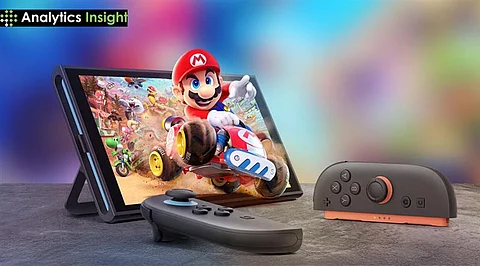

The long-awaited Switch 2 announcement confirmed what gamers have been asking: evolution, not revolution. The preview event showed a console that builds on its predecessor rather than completely changing it. This strategic focus on incremental improvement may prove to matter more than it looks like now.
While the larger 7.9-inch 1080p 120Hz display catches the eye first, the magnetic JoyCon system emerges as the true game-changer. This elegant solution transforms the console's versatility, making the shift between play styles feel satisfyingly seamless. The satisfying "click" when attaching controllers perfectly embodies Nintendo's attention to sensory design.
The full-width, adjustable kickstand corrects perhaps the original Switch's most notorious flaw. Similarly, the additional USB-C port strategically placed on top eliminates the frustrating choice between charging and tabletop play. These thoughtful refinements reveal Nintendo's design philosophy: solving real player problems rather than simply adding processing power. Each improvement directly addresses friction points gamers encountered daily with the original hardware.
Seven years into its lifetime, Mario Kart 8 continues to be the best-selling title on Nintendo Switch; to reinvent this franchise for the Switch 2 only speaks to the confidence behind the new hardware. The battle-royale-style Knockout Tour mode adds a surprisingly modern competitive aspect to Nintendo's traditionally accessible racing franchise.
The free-form driving between races stands for what really does feel like a more revolutionary consideration: Mario Kart as a platform, instead of just the racing game. This structural shift could mean Nintendo's taking cues from modern gaming trends, while still keeping true to their fundamental design philosophy.
While Mario Kart World serves as the safe launch title, Donkey Kong Bonanza emerges as the technical statement piece. The environmental destruction mechanics demonstrate the Switch 2's increased processing power without requiring photorealistic graphics. Making the July 2025 release the first true next-gen experience of the system.
The decision by Nintendo to elevate Donkey Kong up into the system-seller league is a radical departure from its usual franchise strategy. This renewed focus on one of gaming's oldest icons suggests that Nintendo may be mining their extensive back catalog to provide future Switch 2 showcase titles.
The Switch 2's mouse control feature, deceptively simple, could give an entirely new play style for select genres on consoles. Metroid Prime 4: Beyond demonstrated the capability within first-person games. However, this configuration also extends to strategy, social simulation, and creativity-heavy titles. This feature bridges the gap between console accessibility and PC precision without requiring additional peripherals.
Nintendo chose a different approach with the Switch 2 than the power-obsessed console cycles deployed by Sony and Microsoft. By putting the experience of software higher than the specification of hardware. Nintendo has positioned Switch 2 in a complementary role rather than as a direct competitor to existing gaming platforms. The extensive backward compatibility program strengthens this ecosystem-building strategy.
The spotlight on Mario Kart and Donkey Kong-thirty, franchises with 30+ years of history. Reinforce Nintendo's commitment to this long-term gaming view. Switch 2 didn't have to redefine gaming because Nintendo's core experiences have become timeless.
